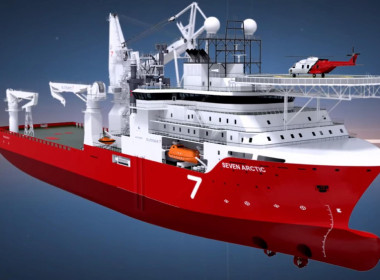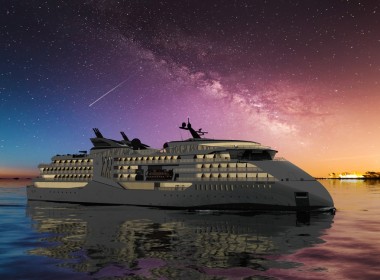COLUMN | Anything goes in 2024 ship design [Grey Power]

People of my age were brought up to believe that the design of a ship was a sort of necessary compromise between the overall dimensions, speed and consumption, cargo capacity, seakeeping abilities, and, as a secondary afterthought (seafarers believed), habitability.
Today, one might be forgiven for believing that the over-arching criterion in any new design is saving the planet, sustainability, and how close it can approach to the ultimate in the search for “net zero.”
As the industry thrashes around searching for a viable alternative to the fuel that is needed to keep the big diesels we depend upon chugging away, there is still no reasonable consensus, with the supporters of the various alternatives biting lumps out of each other as they seek to keep their own favourite to the fore. Class, upon which a technologically poor industry must depend, does its best to remain neutral and objective, which is admirable, except that the questing shipowner must sometimes wish for something more definitive. Surely they cannot all be equally right?
Meanwhile, naval architects are producing designs (some of which have already been translated into cold steel) that anticipate the use of fuels that may not be available and for which no safety regulations have yet been promulgated.
“Would you feel fulfilled and even slightly safe looking out of your window and seeing one of a pair of tanks full of exceedingly toxic and flammable fuel?”
Take, just as an example the enthusiasm for ammonia, which is probably the most energy-rich of the current alternatives, but is certainly the most dangerous to anyone in its vicinity. There are already big bulk carriers that have been constructed with giant tanks for the ammonia fuel on deck either side of the accommodation. They are yet to fill these tanks with this proposed fuel and the ships will be running on the conventional alternatives, but do they really know what they are doing?
The happiness of the ships’ crews will undoubtedly be low in the list of climate-saving priorities, but would you feel fulfilled and even slightly safe looking out of your window and seeing one of a pair of tanks full of exceedingly toxic and flammable fuel? And might the reaction of people who live next to a port have been considered when they see this looming over the dock wall? Who remembers the “diesel death zone” and where that ended up?
I am looking at a proposed design for a big containership that will be ammonia-fuelled, and you can probably guess where the bunker tanks will be situated, where they will not interfere with the stowage of containers. You have it in one – underneath the three quarters forward accommodation structure, which will of course be hermetically sealed to keep the crew safe.
There will also be a great big vent stack on the foredeck out of which the deadly fumes will be allowed to disperse in case of an emergency. They have thought of everything.
I did notice a cautionary tone to a report by LR on the ammonia option option that suggested there were still concerns about the fuel’s toxicity, crew awareness, and the hitherto unspoken matter of “social acceptance”. We don’t want to provoke riots outside the dock gates. You hope that these issues might be properly considered, but you wonder, such is the enthusiasm to replace conventional fuels with anything – at all costs.
“You have to wonder what sort of thought processes were being employed.”
We seem to be living in an era when the words of the popular song “Anything Goes” summarises modern ship design. One is lost in wonder at the latest enthusiasm for perching the ship’s accommodation on what used to be described as the forecastle.
In the old compromise of design, for safety, seamanship, and common sense, you might have sacrificed some of the cargo space for the machinery and a reasonably habitable accommodation island. That is now terribly old-fashioned a notion, and ships of all sizes are being built with the engine room and bridge at the opposite extreme ends. You probably need very fit engineers, but we all know that modern machinery is so much more reliable.
There is even one or more new design where, with the crew right forward, the free-fall lifeboat is perched incongruously above the poop. You have to wonder what sort of thought processes were being employed. Did nobody think how the wretched crew is to get to their boat along the entire ship length?
And it might not be entirely safety-oriented, but I was reading about a trial that found that it took some eight minutes for a fit pilot to get to the bridge of one of the world’s biggest containerships, conventionally configured with the gangway/ladder roughly beneath the bridge, all those decks above.
I’m sure it has occurred to some bright designer, but if you have the bridge on the forecastle, as with these lovely new Maersk ships, and, of necessity, the ladder/gangway in the ship’s parallel body, the poor old pilots, having heaved themselves up to the weather deck level, will have a 100-yard sprint forward to the lift to bear them upwards to where the sweating master will be waiting.
Maybe it is something you can train, as with these “Ironman” exercises, but the cargo, in the lee of the accommodation island, will be safe and snug. No compromise.





